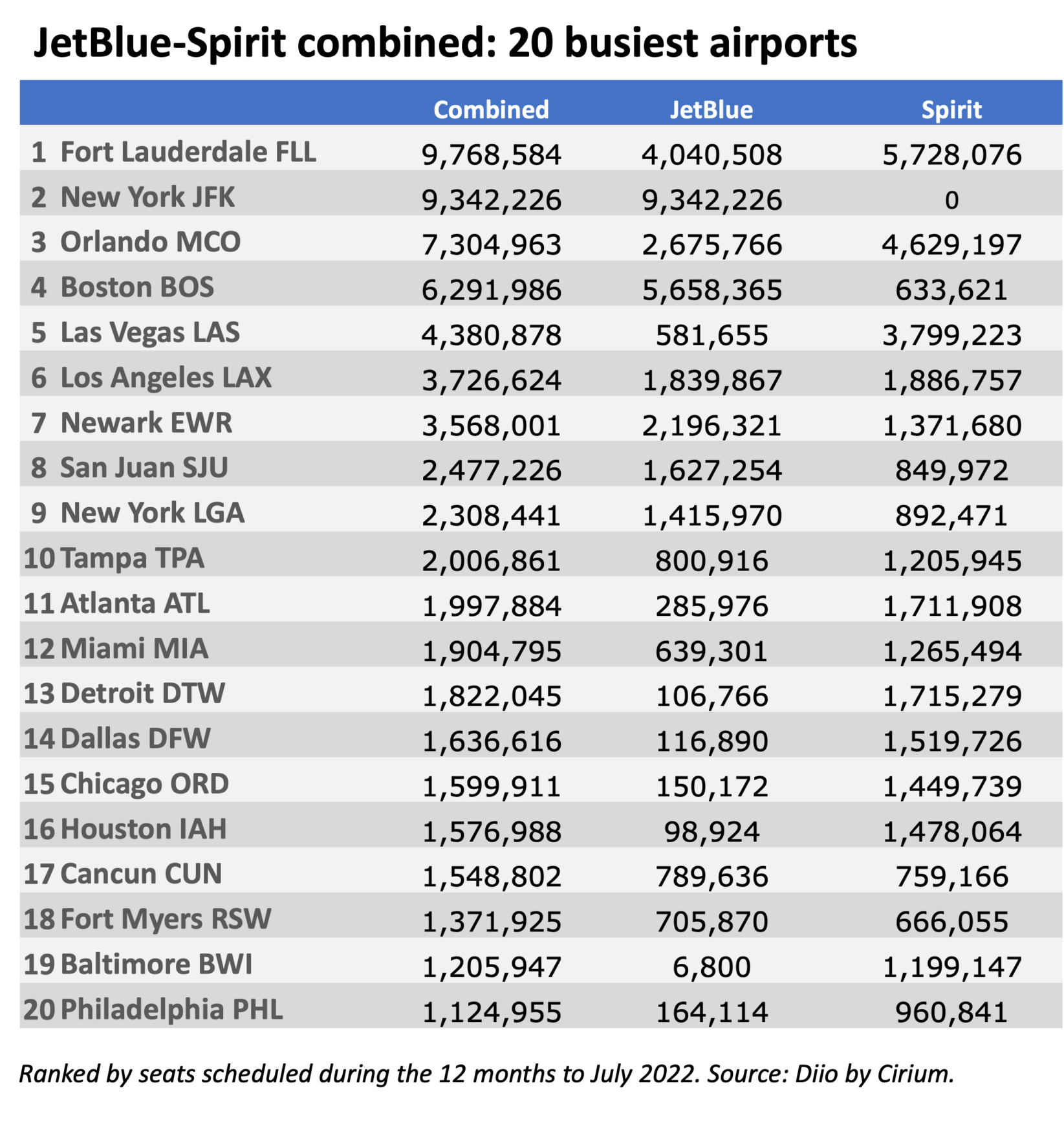
By Mike Malik, Chief Marketing Officer at Cirium
As long as competition regulators don’t get in the way, JetBlue is about to become a lot bigger. Its deal to acquire Spirit Airlines comes after a lengthy battle with Frontier, which in the end wasn’t willing to pay as much.
There’s a lot JetBlue will get from this deal: more planes, more pilots, more scale, more airport real estate, more members for its TrueBlue loyalty plan, and likely more pricing power.
It also gets a larger route network, one it says will be better capable of competing effectively against American, United, Delta, and Southwest, the four giants of the US airline industry.
An analysis from Cirium’s airline planning system, Diio, reveals some important facts about JetBlue’s newly enlarged network. One is that Fort Lauderdale will be its single busiest airport, ranked by seats scheduled during the past 12 months. New York JFK, currently its busiest route, drops to second place. In third place will be Orlando, with Tampa, Miami, and Fort Myers among other Florida cities where JetBlue will have an enlarged footprint. Florida is critical to both the JetBlue and Spirit networks, which combined will surpass Southwest and Delta to become the state’s second busiest carrier by seats after American. That’s important because Florida has become more important to airlines as leisure travel booms.
Boston will continue to be a critical market for JetBlue, where it ranked number one even before the merger. Now it gets to add some new Spirit routes from Boston like Atlantic City and Myrtle Beach. More importantly, as a close look at the Diio schedule data for individual markets reveal, JetBlue loses a competitor and gains frequencies in several busy Boston-Florida markets.

The Caribbean and upper Latin America is another area, like Florida, where Spirit adds to JetBlue’s already formidable clout. In the past 12 months, JetBlue alone operated nearly 93,000 flights to the region. Spirit adds another 47,000. Here again, the merger makes JetBlue the number two market player after American. Latin America and the Caribbean feature many routes catering to leisure and visiting-friends-and-relatives (VFR) traffic, segments that are performing well as the industry emerges from the COVID-19 crisis.
JetBlue, meanwhile, becomes a bit more western-oriented. Las Vegas, just its 18th busiest airport during the past year, suddenly becomes its fifth busiest thanks to Spirit’s rather large presence there. The merger likewise grows its footprint in Los Angeles, long considered a JetBlue focus city. In fact, JetBlue and Spirit combined scheduled more seats from LAX airport than even Alaska Airlines during the past year. It was Alaska, in 2016, that defeated JetBlue in a separate takeover battle for Virgin America, this thwarting the New York carrier’s goal of gaining more western heft.
One area where Spirit doesn’t provide much extra punch is the transcontinental market, long a critical one for JetBlue. Las Vegas aside, Los Angeles is the only city where Spirit offers even a modest menu of transcon offerings. Spirit, of course, doesn’t help at all in the transatlantic market, where JetBlue is establishing a beachhead. Nor does it do anything in Hawaii, a large and profitable market where JetBlue’s been absent.

Assuming the takeover gets approval, and JetBlue starts to integrate Spirit, there will be important strategic changes that impact network capacity. Importantly, JetBlue plans to remove seats from Spirit’s densely configured planes, which means their combined presence at airports going forward won’t look quite as large when measured by total seat capacity historically. Flight schedules could look different too by the time the merger deal is expected to close, which could come as late as mid-2024. By then, maybe it will have prioritized different markets, growing in some more than others.
One thing is for sure though. JetBlue will be a much bigger airline than it is today.




























































